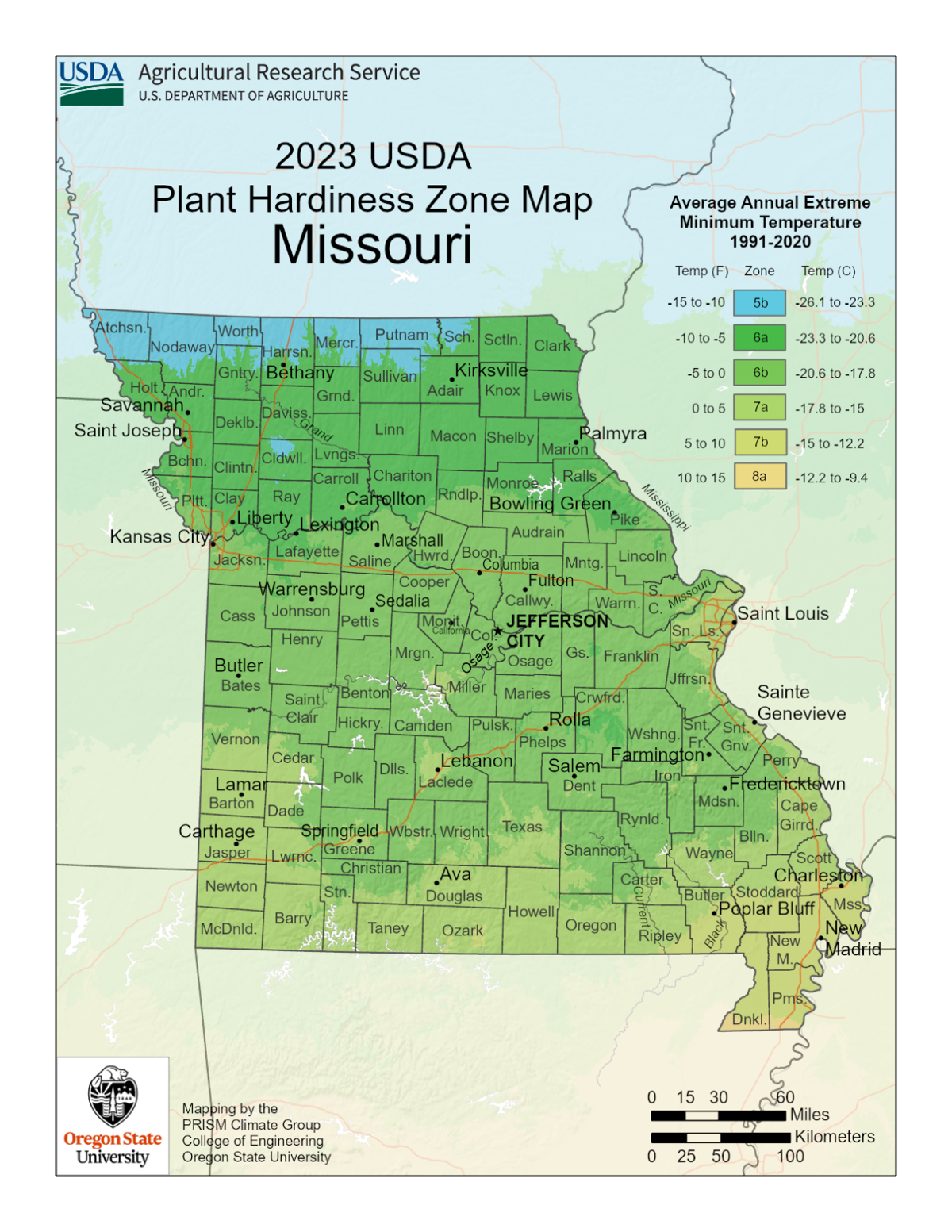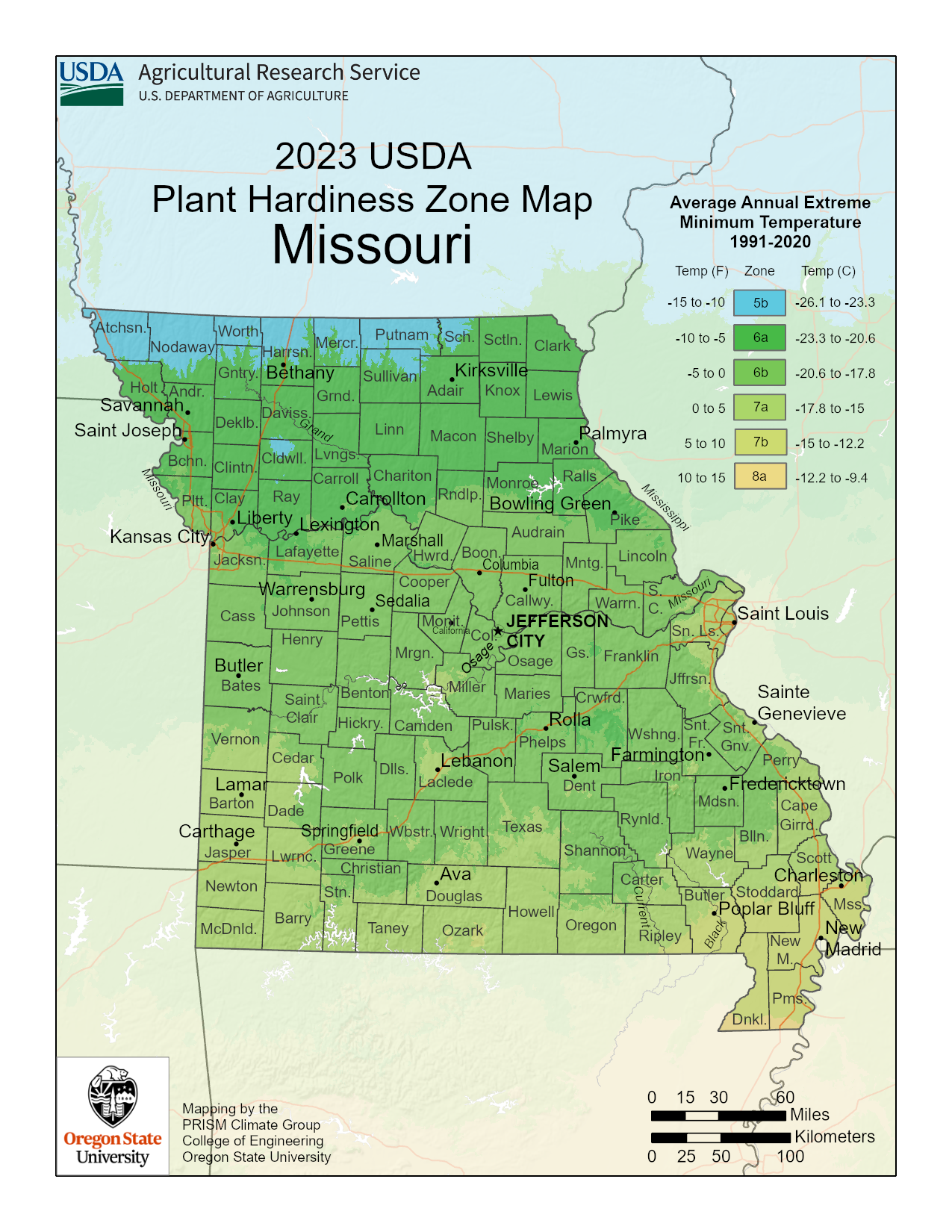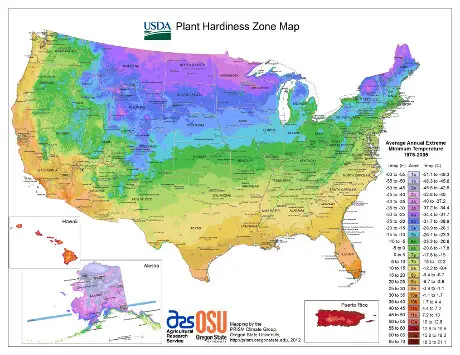Are you wondering what gardening zone St. Louis, Missouri falls into? Whether you’re a seasoned gardener or just starting out, knowing your gardening zone is essential.
It helps you understand what plants will thrive in your garden and when to plant them. Imagine your garden bursting with vibrant blooms and lush greenery, all because you planted at the right time. That dream is within reach, and it starts with knowing your zone.
Stick around to discover the secrets of St. Louis’s gardening zone and how it can transform your gardening game. Your garden’s success story begins here.
JUMP TO TOPIC
- 1 St. Louis Climate Overview
- 2 Understanding Gardening Zones
- 3 Usda Hardiness Zones Explained
- 4 St. Louis Zone Classification
- 5 Impact Of Zone On Plant Selection
- 6 Seasonal Gardening Tips For St. Louis
- 7 Common Plants For St. Louis Gardens
- 8 Resources For St. Louis Gardeners
- 9 Frequently Asked Questions
- 10 Conclusion
St. Louis Climate Overview
Understanding the climate of St. Louis is crucial for gardening enthusiasts. It shapes the types of plants that thrive and affects the timing of gardening activities. Whether you’re growing vegetables or cultivating flowers, knowing the local climate helps you make informed decisions.
St. Louis is known for its temperate climate, characterized by hot, humid summers and cold winters. The city experiences a significant range in temperatures throughout the year. Summers can see temperatures soaring above 90°F, while winters often dip below freezing.
Precipitation in St. Louis is fairly evenly distributed throughout the year. You’ll find that rain is a common occurrence, particularly in the spring and fall. This can be a blessing for your garden, as it helps keep your plants well-watered.
Seasonal Changes And Gardening
How do seasonal changes impact your gardening plans? In spring, the ground thaws, and it’s an excellent time to plant. As temperatures rise, plants start to grow rapidly. Summer offers long daylight hours, perfect for nurturing your garden.
Fall is a season of transition, and it’s ideal for planting cold-resistant vegetables. The cooler temperatures slow growth, but give plants time to establish before winter arrives. Winter, though cold, offers a chance to plan and prepare for the next growing season.
Gardening Tips For St. Louis Climate
Adapt your gardening strategies to match St. Louis’s climate. Use mulch to retain moisture during hot summers. Consider raised beds to improve drainage and reduce the risk of waterlogging during wet seasons.
Choose plants that are suited to both the heat and cold extremes of the area. Native plants are often a good choice as they are naturally adapted to local conditions. Pay attention to weather forecasts, as sudden changes can impact your garden.
Personal Insights On Gardening In St. Louis
Gardening in St. Louis has taught me the importance of flexibility. Weather patterns can be unpredictable, and a planned gardening day may quickly turn into a day inside due to rain. But this unpredictability also offers opportunities for growth.
Each season brings its unique challenges and rewards. Have you ever planted seeds only to see them washed away by unexpected rain? Or watched frost nip at your newly sprouted plants? These experiences make you a more resilient gardener.
Engage With Your Garden
What steps are you taking to adapt your gardening to the St. Louis climate? Share your experiences and strategies with fellow gardeners. It’s through sharing that we learn and grow together.
Consider how your garden can become a reflection of the changing seasons. How do you prepare for the shifts in weather? What plants have you found to be most resilient? Your garden can become a living testament to the dynamic climate of St. Louis.
Understanding Gardening Zones
St. Louis, Missouri falls in USDA Hardiness Zone 6. This zone helps gardeners know which plants will thrive. Understanding these zones ensures successful gardening by matching plants with the local climate.
Gardening zones are crucial for anyone looking to start a garden. They help you determine which plants thrive in your area and when to plant them. If you’re wondering about St. Louis, Missouri, this city falls into a specific gardening zone that you need to understand before digging in the dirt.What Are Gardening Zones?
Gardening zones, also known as hardiness zones, are standardized maps used by gardeners to identify the climate conditions of a specific area. Each zone is determined by the average minimum winter temperature. This helps gardeners know which plants can survive the winter months.Why Are Gardening Zones Important?
Understanding gardening zones is vital because it ensures your plants have the best chance of thriving. Planting outside your zone can lead to disappointment if your plants can’t handle the local weather conditions. By knowing your zone, you can choose plants that are well-suited to your area, leading to a successful and vibrant garden.St. Louis Missouri’s Gardening Zone
St. Louis, Missouri, is primarily in Zone 6b. This means the average minimum winter temperature ranges from -5 to 0 degrees Fahrenheit. Knowing this, you can plan your garden with plants that withstand these temperatures.Choosing The Right Plants For Zone 6b
In Zone 6b, you have a wide range of plant options. Consider hardy perennials like coneflowers and daylilies that are known to flourish here. Vegetables like carrots and broccoli are also great choices. Have you ever tried growing strawberries? They thrive in this zone too!Timing Is Everything
Timing your planting is crucial in Zone 6b. You should be aware of the last frost date, typically around early April. Planting too early might damage your plants, so patience is key.Personal Experience With Gardening In St. Louis
I recall planting tomatoes too early one year, eager for summer salsa. The frost nipped them, teaching me the importance of patience. Have you ever faced similar setbacks? Timing is everything!What Will You Plant Next?
Now that you understand gardening zones, what will you plant next? The possibilities are endless, but the key is choosing wisely. Your garden is a reflection of your choices—make them count!Usda Hardiness Zones Explained
Gardening can be a rewarding and fulfilling activity. But understanding your region’s climate is crucial. The USDA Hardiness Zones are a reliable guide for gardeners. These zones help you know which plants can thrive in your area. They are based on the average annual minimum winter temperature. St. Louis, Missouri, falls into a specific zone that influences plant choices. Knowing this zone helps in planning a successful garden.
What Are Usda Hardiness Zones?
The USDA Hardiness Zones divide North America into 13 zones. Each zone represents a 10-degree Fahrenheit difference in winter temperatures. These zones help gardeners identify suitable plants for their region. Plants have different tolerance levels for cold weather. Choosing plants outside your zone can risk plant survival.
Understanding St. Louis, Missouri’s Zone
St. Louis, Missouri, is in USDA Zone 6. This zone means winter temperatures can drop to -10°F. Gardeners in St. Louis should select plants hardy to this temperature. Popular plants for this zone include hostas, daylilies, and coneflowers. Knowing the zone ensures your garden withstands local winters.
Why Hardiness Zones Matter For Gardeners
Hardiness zones help predict plant survival in your garden. They guide you in selecting the right plants for your climate. This knowledge saves time and money in the long run. It helps you avoid planting species that won’t survive the winter. Understanding zones helps create a garden that flourishes year-round.
St. Louis Zone Classification
Gardening enthusiasts in St. Louis find its climate interesting. This city falls into a specific gardening zone. Understanding this helps gardeners choose the right plants. The zone classification tells about temperature ranges and growing conditions.
Understanding St. Louis Zone Classification
St. Louis is classified under USDA Hardiness Zone 6. This zone has cold winters and warm summers. It covers temperatures ranging from -10°F to 0°F. Knowing this helps in selecting plants that thrive here.
Why Zone 6 Matters
Choosing the right plants for Zone 6 ensures healthy growth. Some plants cannot survive cold winter temperatures. Zone classification guides gardeners in making informed decisions.
Popular Plants For Zone 6
Many plants thrive in Zone 6’s climate. Peonies, daylilies, and hostas grow well here. These plants can withstand cold winters and bloom beautifully. Gardeners often choose these for their gardens.
Gardening Tips For St. Louis
Mulching helps protect plants during winter. It retains moisture and insulates roots. Regular watering and soil care are important. These practices support plant health and growth.
Impact Of Zone On Plant Selection
Gardening zones help determine which plants thrive in specific regions. St Louis, Missouri, falls under USDA Hardiness Zone 6. This means average annual minimum temperatures are between -10°F to 0°F. Knowing your zone guides plant choices, ensuring successful growth and blooming. Selecting plants suited to the local climate enhances gardening success.
Choosing The Right Plants
Zone 6 offers a rich selection of plants that can flourish. Perennials like daylilies and coneflowers are ideal. They are hardy and resilient, making them perfect for this zone. Vegetables such as carrots and lettuce grow well in cooler temperatures. It’s important to check plant labels for zone compatibility.
Adjusting To Climate Variations
Climate variations can affect plant growth. Temperatures may fluctuate, impacting bloom cycles. Plants should be selected based on their adaptability to changing conditions. Mulching can protect roots during cold spells. During warmer months, ensuring adequate hydration is crucial.
Regular monitoring of weather forecasts helps plan gardening activities. Using protective covers can shield plants from unexpected frosts. Selecting plants with flexible growing conditions can mitigate risks. This ensures a thriving garden despite unpredictable climate shifts.

Credit: www.reddit.com
Seasonal Gardening Tips For St. Louis
St. Louis, Missouri, located in gardening zone 6b, offers a unique climate that shapes the way residents tend to their gardens throughout the year. With its mix of hot summers and cold winters, understanding the best practices for each season is crucial. Whether you’re a seasoned gardener or just starting out, these seasonal gardening tips can help you make the most of your garden in St. Louis.
Spring Planting Guide
Spring in St. Louis is the perfect time to start planting cool-season vegetables like lettuce and spinach. Consider starting seeds indoors in late winter to get a jump start. Once the last frost date passes, usually around mid-April, you can safely transplant them outdoors.
Don’t forget your flowers. Planting perennials like coneflowers and daylilies can add a burst of color to your garden. A neighbor once shared how planting marigolds along the edge of her vegetable garden kept pests away.
Summer Care Strategies
In the heat of a St. Louis summer, keeping your plants hydrated is essential. Water deeply in the early morning or late evening to reduce evaporation.
Mulching can help retain moisture and keep roots cool. Consider using organic mulch like straw or wood chips.
Keep an eye out for summer pests. Regular checks can prevent infestations. Have you tried using natural pest repellents like neem oil?
Fall Harvest Tips
As the temperature drops, it’s time to harvest your summer crops. Tomatoes and peppers may continue producing until the first frost, usually in October.
Think about planting fall crops like kale and broccoli. These thrive in cooler weather and can extend your harvest season.
Have you ever saved seeds for next year? Collecting seeds from your favorite plants can be a rewarding fall activity.
Winter Protection Techniques
Winter in St. Louis can be harsh, so protecting your garden is crucial. Use burlap or frost blankets to shield delicate plants.
Consider building a cold frame or greenhouse for year-round gardening. A small investment can yield fresh greens even in January.
Don’t forget about your soil. Adding a layer of compost in late fall can enrich it for the next planting season.
What are your favorite gardening strategies for each season? Share your tips and experiences in the comments below. Together, we can make every garden in St. Louis thrive.
Common Plants For St. Louis Gardens
St. Louis, Missouri, falls under USDA Hardiness Zone 6. This zone supports a variety of plants like hostas, daylilies, and coneflowers. These plants thrive in the local climate, making them ideal choices for gardeners in the area.
When planning your garden in St. Louis, Missouri, it’s important to know that you’re in USDA Hardiness Zone 6. This means you have a wide variety of plants to choose from that thrive in this climate. From lush native flora to vibrant ornamental plants, your garden can be a colorful oasis. But which plants should you consider for your St. Louis garden? Let’s explore some common plant options.Native Plant Options
Native plants are a great choice for St. Louis gardens because they are well-suited to the local climate and soil. They require less water and care, allowing you more time to enjoy your garden rather than work in it. Purple Coneflower is a popular native plant that adds a splash of color. Its bright purple petals attract bees and butterflies, promoting a healthy garden ecosystem. Missouri Primrose offers beautiful yellow blooms. Its drought-resistant nature makes it perfect for those hot summer days. Wild Columbine brings unique red and yellow flowers. It flourishes in partial shade, adding interest to those tricky garden spots. Have you ever noticed how vibrant these native plants look with minimal effort? That’s the beauty of choosing flora that naturally belongs in your region.Popular Ornamental Choices
Ornamental plants can add a touch of elegance and personality to your garden. They provide year-round interest with their stunning foliage and flowers. Daylilies are a favorite for their long blooming period and low maintenance. You can find them in various colors, complementing any garden theme. Japanese Maple offers striking foliage, particularly in the fall. Its red and orange leaves create a dramatic effect that can be the highlight of your garden. Boxwood Shrubs are versatile and can be shaped into hedges or left to grow naturally. Their evergreen leaves keep your garden lush even in winter. Do you want your garden to stand out all year round? Consider mixing these ornamental choices with native plants for a balanced and eye-catching garden. Choosing the right plants for your St. Louis garden can be a rewarding experience. By considering native and ornamental options, you can create a space that’s not only beautiful but also sustainable. What will your garden say about you this season?
Credit: www.laduenews.com
Resources For St. Louis Gardeners
Gardening in St. Louis, Missouri is a rewarding pursuit. The city’s unique climate offers diverse opportunities for gardeners. St. Louis falls within USDA Hardiness Zones 6a and 6b. To thrive, gardeners need resources tailored to these zones. Thankfully, local organizations provide valuable support. Whether you’re a novice or a seasoned gardener, St. Louis has something for everyone. Discover local gardening clubs, extension services, and workshops to enrich your gardening experience.
Local Gardening Clubs
Joining a gardening club connects you with like-minded individuals. St. Louis boasts several active gardening clubs. These clubs offer regular meetings and events. They provide a platform for sharing tips and experiences. Members benefit from expert advice and camaraderie. Gardening clubs often organize plant swaps and tours. A great way to expand your plant collection.
Extension Services And Workshops
St. Louis offers excellent extension services. The University of Missouri provides valuable resources. These services include soil testing and pest management advice. Workshops cover topics like seasonal planting and sustainable practices. Extension services help you understand local conditions better. Workshops offer hands-on learning experiences. They enhance your gardening skills and knowledge.

Credit: www.gardeningknowhow.com
Frequently Asked Questions
What Is The Usda Zone For St Louis?
St Louis, Missouri, falls under USDA Hardiness Zone 6. This zone indicates the average annual minimum winter temperature. Gardeners can expect temperatures between -10°F to 0°F. This information helps in selecting plants suitable for local climate conditions.
How Does St Louis Climate Affect Gardening?
St Louis has a humid continental climate impacting gardening activities. Summers are hot, while winters are cold. Precipitation is well distributed throughout the year. Understanding these weather patterns helps gardeners plan plantings and maintenance schedules effectively.
What Plants Thrive In St Louis Gardening Zone?
In St Louis, you can grow plants like roses, daylilies, and hostas. These plants thrive in Zone 6 due to their adaptability to the climate. Selecting native and hardy species ensures better growth and less maintenance.
When Is The Best Planting Time In St Louis?
The best planting time in St Louis is spring and fall. Spring offers moderate temperatures, ideal for planting vegetables and flowers. Fall is perfect for planting trees and shrubs, allowing them to establish roots before winter.
Conclusion
St. Louis, Missouri, lies in gardening zone 6. This zone offers a mix of weather conditions. It experiences cold winters and warm summers. Plant choice is crucial here. Hardy plants thrive in colder months. Warm-season crops flourish as temperatures rise.
Understanding your zone helps in planning your garden. It guides plant selection and care. With this knowledge, your garden can prosper in St. Louis. Gardening becomes easier and more rewarding. Enjoy the beauty and bounty your garden can offer. Happy gardening!

